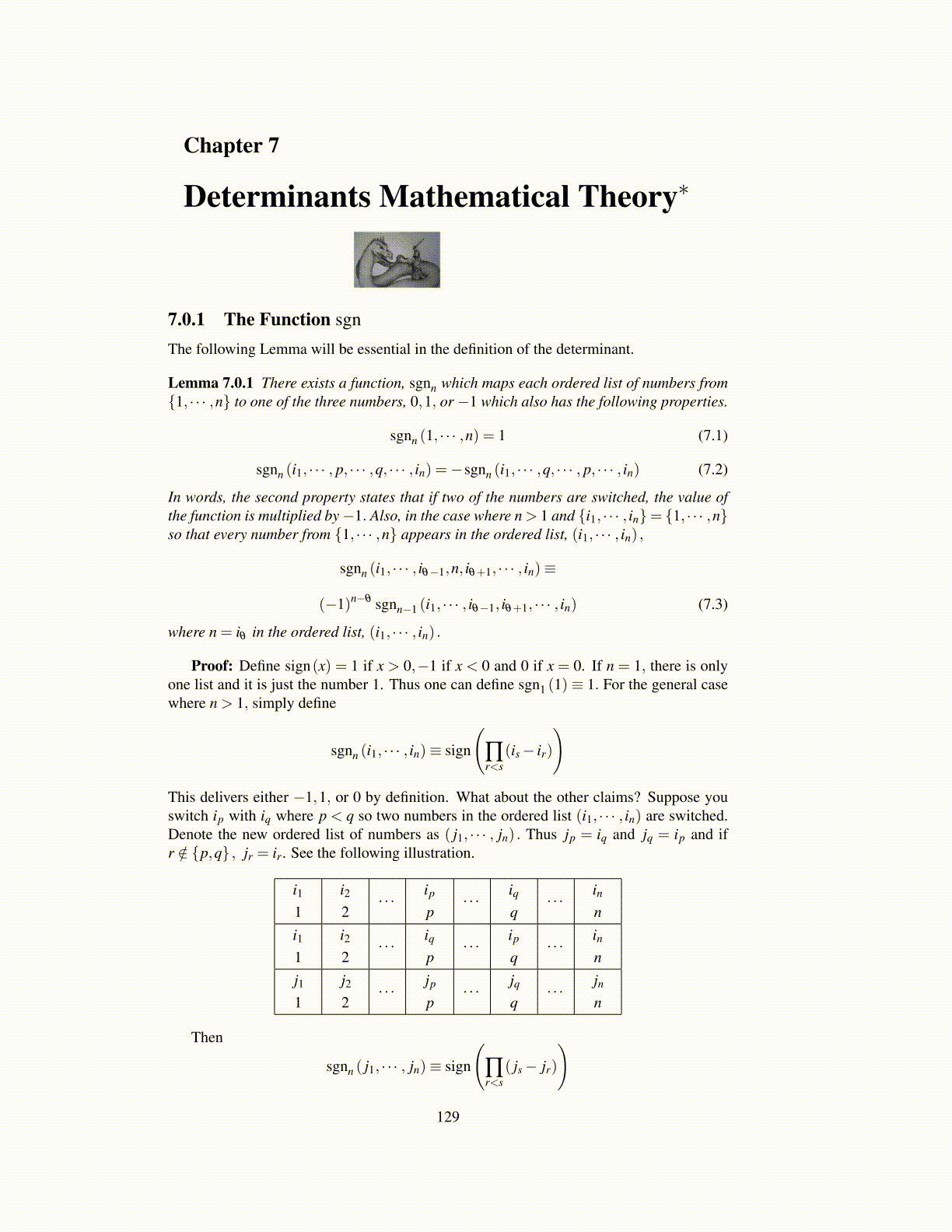
Chapter 7
Determinants Mathematical Theory∗
7.0.1 The Function sgn
The following Lemma will be essential in the definition of the determinant.
Lemma 7.0.1 There exists a function, sgnn which maps each ordered list of numbers from{1, · · · ,n} to one of the three numbers, 0,1, or −1 which also has the following properties.
sgnn (1, · · · ,n) = 1 (7.1)
sgnn (i1, · · · , p, · · · ,q, · · · , in) =−sgnn (i1, · · · ,q, · · · , p, · · · , in) (7.2)
In words, the second property states that if two of the numbers are switched, the value ofthe function is multiplied by−1. Also, in the case where n > 1 and {i1, · · · , in}= {1, · · · ,n}so that every number from {1, · · · ,n} appears in the ordered list, (i1, · · · , in) ,
sgnn (i1, · · · , iθ−1,n, iθ+1, · · · , in)≡
(−1)n−θ sgnn−1 (i1, · · · , iθ−1, iθ+1, · · · , in) (7.3)
where n = iθ in the ordered list, (i1, · · · , in) .
Proof: Define sign(x) = 1 if x > 0,−1 if x < 0 and 0 if x = 0. If n = 1, there is onlyone list and it is just the number 1. Thus one can define sgn1 (1)≡ 1. For the general casewhere n > 1, simply define
sgnn (i1, · · · , in)≡ sign
(∏r<s
(is− ir)
)
This delivers either −1,1, or 0 by definition. What about the other claims? Suppose youswitch ip with iq where p < q so two numbers in the ordered list (i1, · · · , in) are switched.Denote the new ordered list of numbers as ( j1, · · · , jn) . Thus jp = iq and jq = ip and ifr /∈ {p,q} , jr = ir. See the following illustration.
i11
i22
· · · ip
p· · · iq
q· · · in
ni11
i22
· · · iqp
· · · ip
q· · · in
nj11
j22
· · · jp
p· · · jq
q· · · jn
n
Then
sgnn ( j1, · · · , jn)≡ sign
(∏r<s
( js− jr)
)
129